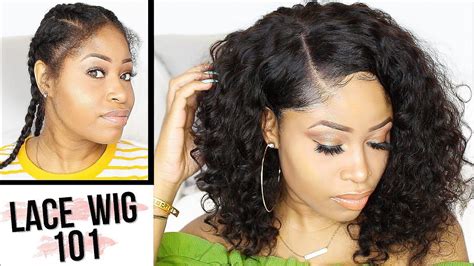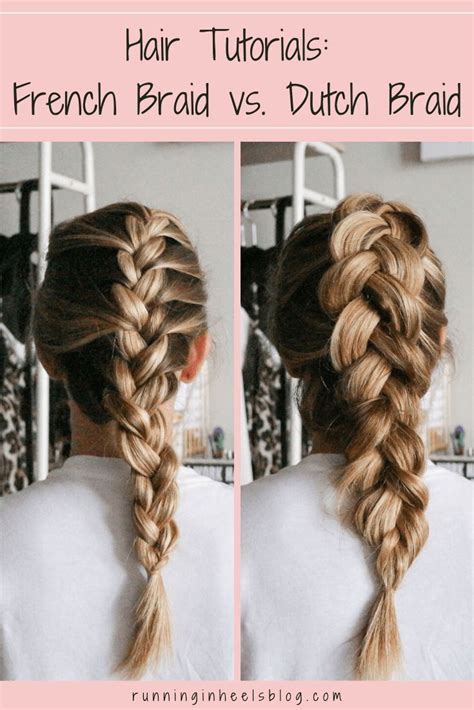Introduction
Braid, a hairstyle involving the intertwining of three or more strands of hair, has been a popular choice for centuries. Among the numerous braiding techniques, Dutch and French braids stand out as two of the most versatile and elegant options. This article delves into a comprehensive comparison of Dutch and French braids, exploring their defining characteristics, advantages and disadvantages, and step-by-step instructions for creating each style.

Defining Characteristics
Dutch Braid (also known as a reverse braid or inside-out braid) is characterized by its intricate pattern where strands are crossed under rather than over one another. The resulting effect creates a raised and textured appearance.
French Braid (also known as an outside-in braid) is woven by crossing strands over one another, producing a flat and smooth surface. The braids are created by adding new hair to the outer strands as they are crossed.
Advantages and Disadvantages
| Feature | Dutch Braid | French Braid |
|---|---|---|
| Texture | Raised, bulky | Flat, smooth |
| Volume | Fuller, more voluminous | Less voluminous |
| Complexity | More complex, requires more practice | Simpler, easier to learn |
| Versatility | Can be worn in various styles, including buns and crown braids | Ideal for classic hairstyles, such as ponytails and updos |
| Durability | Tends to last longer, secure hold | May loosen over time |
Step-by-Step Instructions
Dutch Braid
- Divide damp hair into three equal strands.
- Cross the right strand under the middle strand.
- Cross the left strand under the right strand.
- Repeat steps 2 and 3, adding small sections of hair from the sides as you cross the strands.
- Continue braiding all the way down to the nape of the neck.
- Finish by securing the end with an elastic band.
French Braid
- Divide damp hair into three equal strands.
- Cross the right strand over the middle strand.
- Cross the left strand over the new middle strand (previously the right strand).
- Repeat steps 2 and 3, adding small sections of hair from the sides as you cross the strands.
- Continue braiding all the way down to the end of the hair.
- Finish by securing the end with an elastic band.
Applications
Beyond their aesthetic appeal, Dutch and French braids offer numerous practical applications:
- Time-saving: Braiding can save time and effort in styling hair.
- Protection: Braids help protect hair from heat, wind, and other environmental factors.
- Exercise: Braids keep hair out of the face and neck during physical activity.
- Special occasions: Braids add a polished and elegant touch to special occasions, such as weddings and formal events.
- Children: Braids are a versatile and practical hairstyle for children, helping to control tangles and flyaways.
Market Trends
According to a study by the International Hairdressing and Beauty Association (IHBA), the global hair braiding market is projected to reach $22 billion by 2026, with Dutch and French braids accounting for a significant share. This growth is attributed to rising consumer demand for natural and versatile hairstyles, as well as the increasing popularity of social media platforms, where these braids are widely showcased.
Strategies for Success
To cater to the growing demand for Dutch and French braids, hair stylists and beauty professionals can implement the following strategies:
- Educate clients: Provide clients with detailed explanations of the different braid techniques and their benefits.
- Showcase versatility: Demonstrate how Dutch and French braids can be incorporated into a wide range of hairstyles, from casual to formal.
- Offer personalized services: Customize braiding styles based on individual hair texture, length, and desired effect.
- Innovate with new techniques: Explore new and creative braiding patterns to keep clients engaged and trendy.
- Partner with beauty influencers: Collaborate with social media influencers to promote Dutch and French braids and expand reach.
Conclusion
Dutch and French braids offer distinct advantages and applications, catering to the diverse styling needs of individuals. With the global hair braiding market experiencing exponential growth, it is essential for stylists and beauty professionals to embrace these techniques and leverage them to enhance their services and attract new clients. By understanding the defining characteristics, advantages, and step-by-step instructions of Dutch and French braids, as well as the latest market trends and successful strategies, hairstylists can effectively meet the evolving hair care needs of their customers.
